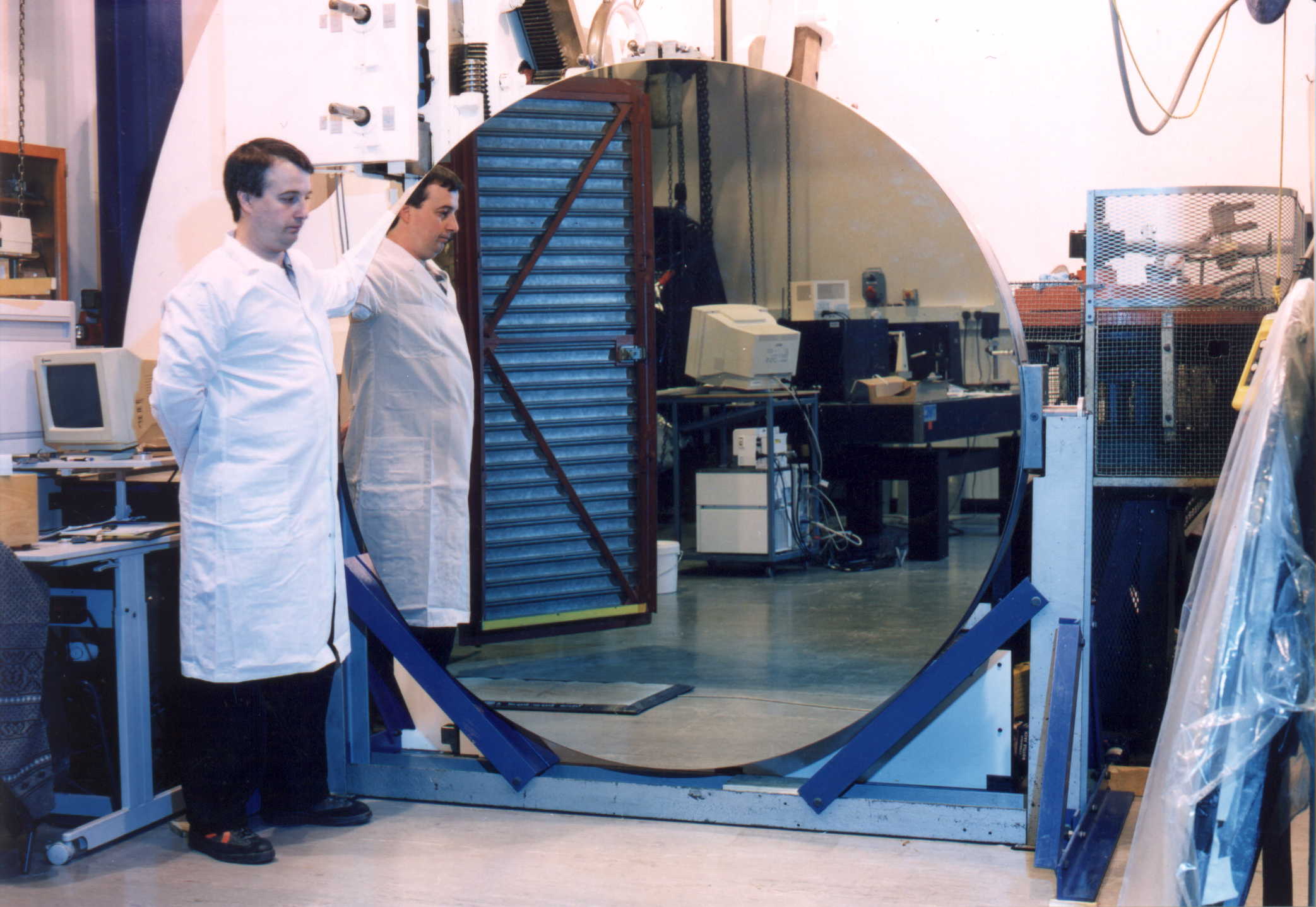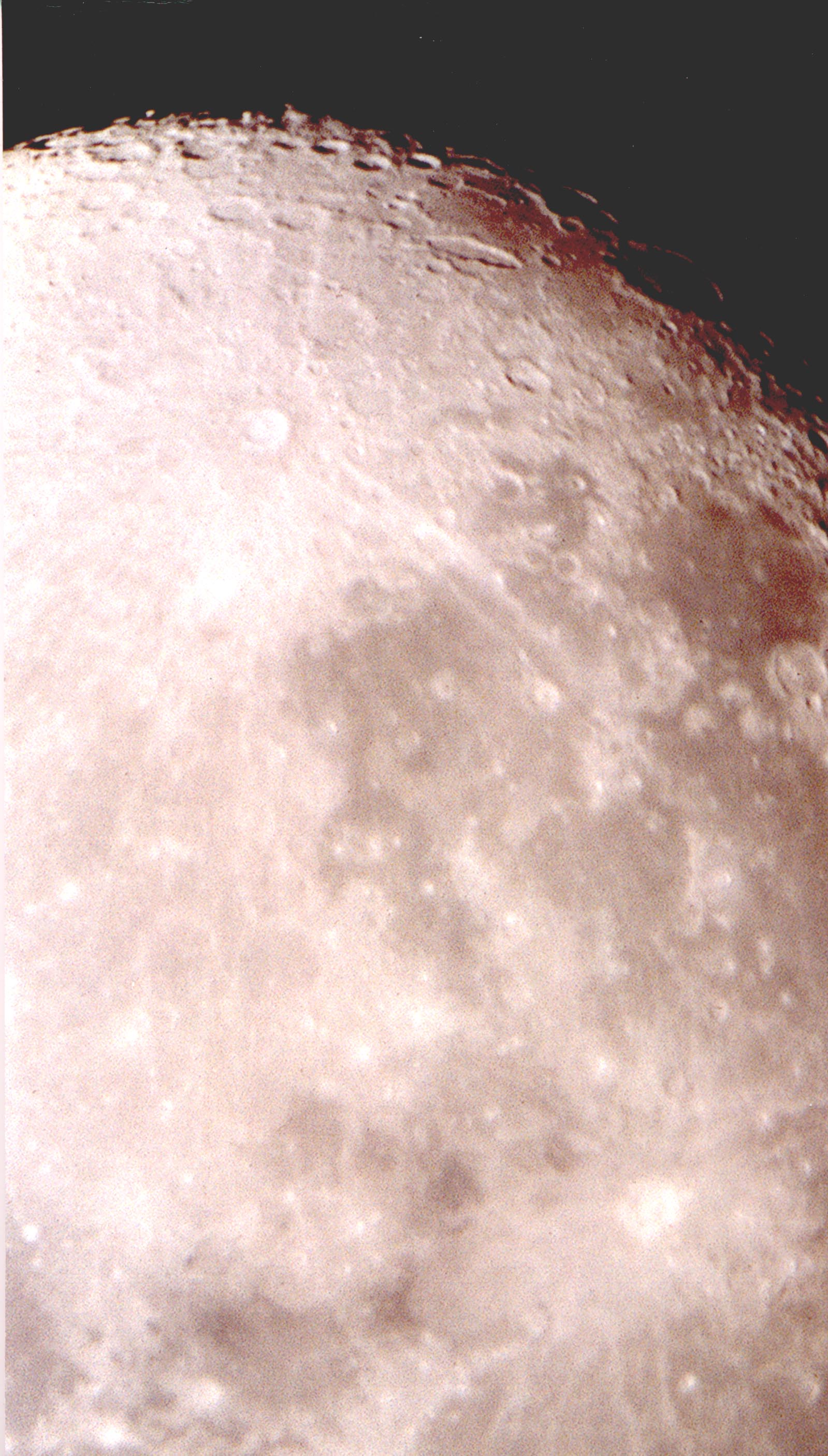|
The new 72in (1.8m) Birr telescope mirror at OSL The original Birr telescope was built by the Third Earl of Rosse and commissioned in 1845. The tube was pivoted on a gimbal system at the lower end and supported from above by chains driven by a manually-operated winch. It was mounted between two massive walls, which permitted full altitude coverage. A limited azimuth travel was also provided. The telescope is most famous for its discovery of the Whirlpool Nebula in 1845. By 1850 the third Earl had seen the spiral structure of some fourteen galaxies. However, after the death of the fourth Earl in 1908 the telescope fell into disrepair, until the current seventh Earl embarked on his ambitious reconstruction project under the auspices of the Birr Foundation. He re-built the telescope tube and its motion system, including automated actuation to complement the restored manual functions. He then progressed to consider restoring the telescope to full working order. After winning financial support, the Birr Foundation placed a contract with OSL to produce:
The primary and secondary mirrors were produced at OSL in nickel-coated aluminium, following extensive R&D in the metal mirror technology.Unusually, the mirrors were left as bare nickel i.e. without the customary final vacuum-coating of aluminium, in order to leave a highly permanent and durable surface, albeit with a modest penalty in throughput. The eyepieces were designed using standard ray-tracing techniques. The optical system was installed and commissioned by the OSL team during the summer of 1999. Following general maintenance and the remedy of teething problems in the telescope motions identified during the commissioning period, the telescope is expected to be available for observational use from 2000 onwards.
The moon photographed through the Birr telescope |

